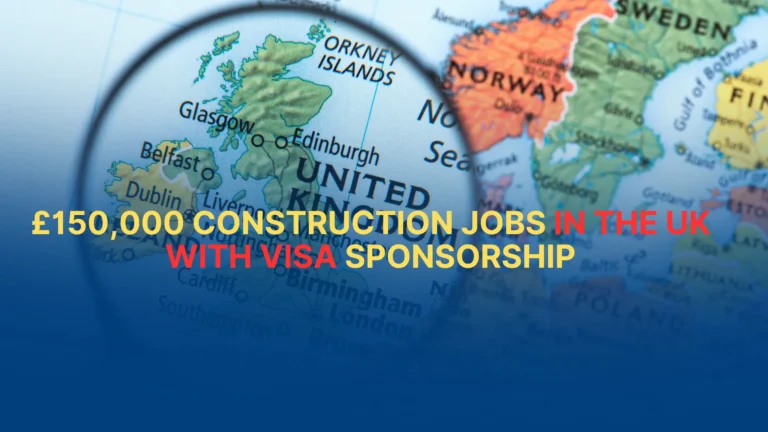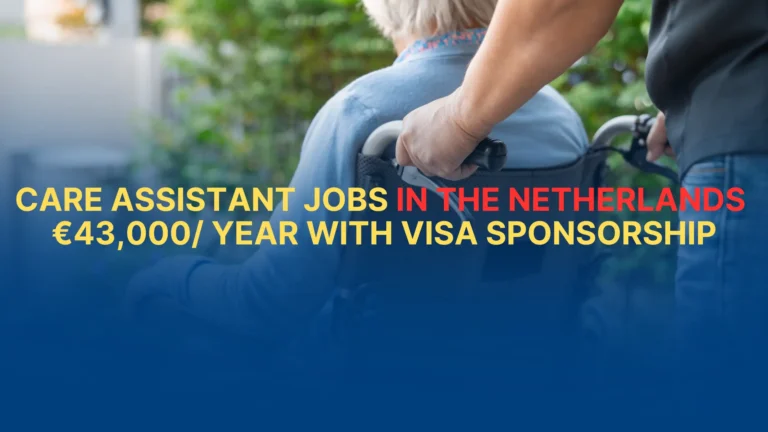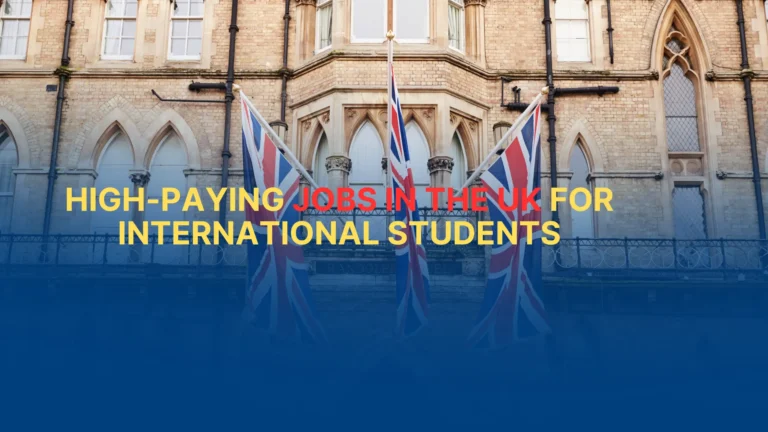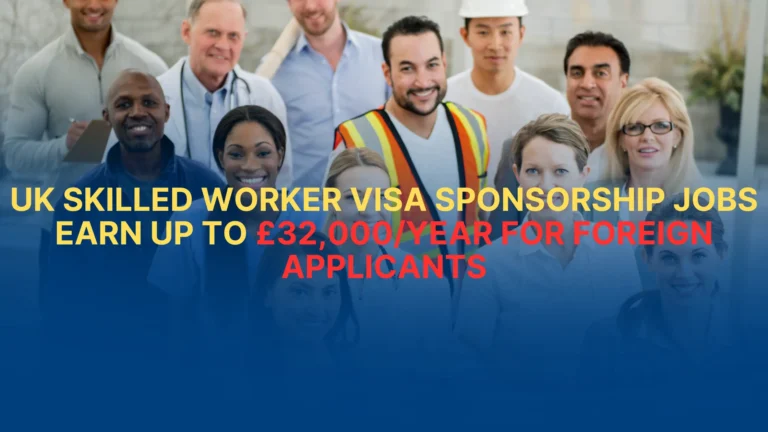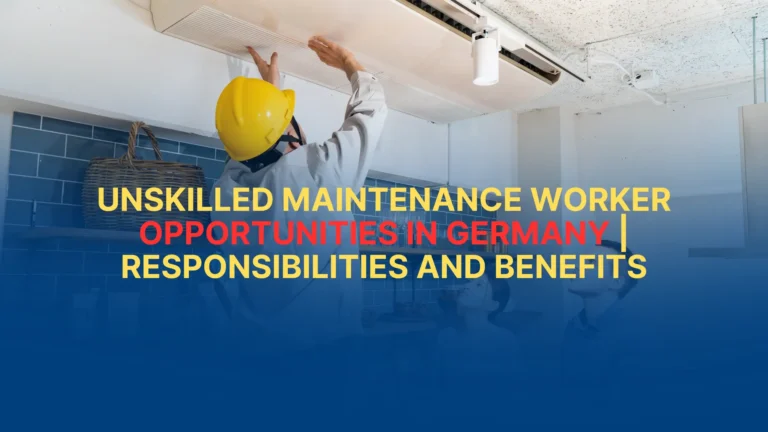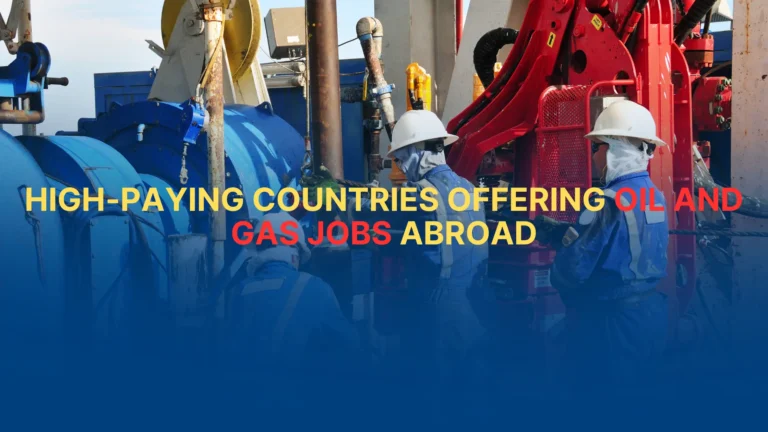USA Jobs for Skilled Foreign Immigrants in 2025
The United States remains one of the most sought-after destinations for skilled foreign immigrants searching for better career prospects, competitive salaries, and access to high-quality work environments.
In 2025, the demand for skilled professionals has grown across multiple industries, as American companies continue to face workforce shortages in sectors like healthcare, engineering, technology, construction, and finance. Skilled foreign workers are now playing an increasingly vital role in filling these gaps, especially in positions that require technical know-how, professional certification, or specialized training.
The pathway to employment in the United States is complex, but it’s also filled with significant opportunities for individuals who possess in-demand skills and the right attitude toward work. From obtaining the proper visa to identifying industries that actively recruit skilled immigrants, the process involves careful planning and knowledge of the American job market.
Unlike low-wage or seasonal labor opportunities, skilled jobs in the United States often come with long-term employment contracts, comprehensive benefits packages, and the potential to sponsor immediate family members through employment-based immigration categories.
The year 2025 has introduced a greater sense of urgency among employers to find experienced workers from abroad.
Whether you’re a data analyst, registered nurse, electrical engineer, or welder, there are thousands of companies in the United States looking for skilled international professionals to fill vacancies. This means there is an open window for foreign-born talents to secure a stable career and benefit from structured employment.
As the U.S. economy continues to stabilize after global disruptions in previous years, the government has also taken steps to make visa sponsorships more accessible for deserving professionals.
Combined with high-paying opportunities and strong labor rights protections, the United States remains a prime destination for foreign workers with recognized expertise.
For job seekers looking to migrate legally and build a successful life, understanding the system, requirements, and high-demand regions can provide a powerful advantage when applying for a skilled job in the USA in 2025.
Entry-level Skills and Experience Required
Getting started as a skilled worker in the U.S. requires more than just qualifications; it demands demonstrable skills, relevant job experience, and in many cases, a professional certification.
In 2025, employers in the United States are seeking individuals who possess both technical abilities and soft skills that align with the expectations of American workplaces. While higher education and work experience are fundamental, job-readiness has become a critical metric for employers evaluating foreign applicants.
For many entry-level skilled positions, applicants need at least a vocational certificate, associate degree, or a bachelor’s degree in a related field. However, for certain technical roles, like HVAC technicians, licensed plumbers, or certified nursing assistants (CNAs), specialized training and certification through accredited programs can suffice.
The American labor market places strong emphasis on practical experience, meaning internships, apprenticeships, or even hands-on training in your home country can strengthen your job application significantly.
Strong English language communication remains a vital requirement across all skilled occupations, even if the job itself is highly technical. Employers want workers who can understand safety instructions, participate in team meetings, and interact professionally with clients or patients. While the TOEFL or IELTS exams may be required for visa purposes, some companies may also assess language skills during interviews.
In fields such as IT, software development, or engineering, industry-standard certifications like CompTIA, Cisco, AWS, or PMP can set candidates apart. Similarly, for medical professions, a U.S. license is often needed, which may involve passing board exams and fulfilling supervised practice requirements.
Skilled trades, like welding or construction, typically require Occupational Safety and Health Administration (OSHA) training or completion of state-approved apprenticeship programs.
Hands-on experience is often preferred over theoretical knowledge. For instance, an electrician with five years of on-site work is more valuable to a U.S. employer than someone with a degree but no practical skills.
Similarly, a foreign nurse who has worked in high-volume hospitals or emergency care will likely meet the clinical experience thresholds set by American licensing boards.
In addition to technical competence, soft skills such as punctuality, reliability, adaptability, and teamwork are considered essential in the U.S. workforce.
Employers often prioritize candidates who show the ability to work independently, follow standard procedures, and contribute to a harmonious workplace. For any skilled immigrant looking to apply in the U.S., building a portfolio of work experience, references, and certifications is essential in meeting entry-level expectations.
Regions with the Highest Payment Structures
In the United States, salary levels are influenced heavily by geography. Skilled foreign workers often target cities and regions where compensation is highest relative to the cost of living and job demand. In 2025, certain metropolitan areas and states have emerged as top destinations for skilled immigrants due to their robust economies, labor shortages, and high wage offerings.
California remains a dominant force in terms of salary scales, particularly for technology professionals, healthcare workers, and construction specialists. Cities like San Francisco, San Diego, and San Jose offer competitive wages, with software engineers, registered nurses, and data scientists earning six-figure salaries.
The high cost of living in California is often offset by the abundant job opportunities and availability of employer-sponsored visa programs, especially among large tech firms and hospitals.
Texas continues to rise in prominence due to its lower living costs and favorable business environment. Houston, Dallas, and Austin have become hubs for skilled tradespeople, oil and gas engineers, and IT professionals.
Employers in Texas are known for offering high wages and long-term contracts, particularly in industries like energy, healthcare, and construction. Moreover, many Texas employers are registered with the U.S. Department of Labor to provide foreign labor certification.
The Northeastern region, especially New York, Massachusetts, and New Jersey, provides lucrative job opportunities for professionals in finance, education, medical research, and skilled trades.
Hospitals, universities, and financial institutions in these states are willing to sponsor foreign workers who demonstrate expertise and professional discipline. New York City, in particular, has one of the highest salary averages across all job categories, including skilled labor.
In the Midwest, states like Illinois, Michigan, and Ohio are expanding hiring for engineering, automotive, and manufacturing roles. Cities like Chicago and Detroit have implemented programs to attract skilled immigrants as part of economic revitalization efforts. These regions also offer strong labor protections and relatively affordable housing, making them attractive for foreign workers seeking long-term stability.
On the West Coast, apart from California, states like Washington and Oregon are seeing rapid job growth, especially in the tech, manufacturing, and logistics sectors. Seattle is especially favorable for foreign workers in the IT and aerospace sectors due to the presence of global corporations with structured visa sponsorship systems.
Ultimately, while the cost of living varies from state to state, high-paying regions for skilled immigrants also tend to offer better access to visa processing, healthcare, and housing support, making them ideal for foreign professionals looking to work and settle in the United States.
Salary Expectations for Skilled Workers in the USA
The financial rewards for skilled labor in the United States can be substantial, depending on the industry, job title, and location. In 2025, wage structures will continued to rise due to labor shortages and inflationary pressures, making it an opportune time for skilled immigrants to seek employment.
Skilled foreign workers with certifications and documented experience can expect competitive salaries that not only meet global standards but also provide long-term financial security.
On average, skilled workers in the healthcare sector such as registered nurses, physical therapists, and radiologic technologists are earning between $70,000 and $110,000 annually, with some positions in critical care or specialized clinics reaching even higher.
Medical professionals with U.S. licensing and experience can also negotiate for relocation packages, signing bonuses, and visa sponsorships tied to employment contracts.
Technology continues to be one of the most rewarding sectors. Software developers, network engineers, and cybersecurity analysts often receive starting salaries from $85,000 to $130,000 per year. Those with advanced programming skills or certifications in cloud computing and AI may earn even more, particularly in cities like Seattle, Austin, or San Jose.
Skilled trades such as electricians, welders, plumbers, and HVAC technicians are seeing robust salary growth. A certified welder or journeyman electrician can earn upwards of $60,000 annually, with overtime and union memberships pushing those numbers higher.
These fields are especially favorable for skilled immigrants since employers are actively seeking to fill these positions with workers from abroad due to domestic labor shortages.
Engineers, particularly civil, mechanical, and electrical engineers, are earning between $75,000 and $120,000 annually, depending on their area of specialization and region. Engineers who hold international certifications recognized by U.S. boards are more likely to secure positions quickly and command higher salaries.
In construction, project managers and site supervisors are highly valued. These professionals can earn $70,000 to $100,000 annually and often work on long-term infrastructure projects that guarantee employment for several years.
The finance and accounting sectors also provide lucrative roles for foreign professionals with CPA, CFA, or equivalent credentials. Salaries in these fields range from $80,000 to $150,000 depending on experience, industry, and job responsibilities.
Skilled workers sponsored under employment-based visa categories often receive benefits beyond base pay, including health insurance, retirement contributions, and paid leave. With rising demand in nearly all sectors, skilled immigrants entering the U.S. in 2025 can expect both competitive pay and job security.
Visa Types and Options for Skilled Workers in the USA
For skilled foreign professionals aiming to work in the United States in 2025, understanding the visa landscape is essential. The U.S. offers several visa types that cater specifically to individuals with technical, professional, or specialized skills.
These visa categories not only provide lawful entry into the country but also open doors to long-term employment, residency, and even citizenship over time. Choosing the right visa is often the first step toward a stable, high-paying career in the U.S.
The H-1B visa is the most recognized non-immigrant visa for skilled foreign workers. It allows U.S. companies to employ individuals in specialty occupations such as IT, engineering, healthcare, and finance. To qualify, applicants must hold at least a bachelor’s degree or its equivalent in a related field.
Each year, a limited number of H-1B visas are issued, making the process competitive. However, employers who hire foreign workers often assist with documentation and filing, increasing the applicant’s chances of approval. H-1B visa holders can stay in the U.S. for up to six years and may be eligible for green card sponsorship.
Another pathway is the L-1 visa, intended for intra-company transfers. This is particularly useful for multinational corporations transferring foreign employees with managerial or specialized knowledge roles to U.S. offices. The L-1 visa also allows for dual intent, meaning the visa holder can apply for permanent residence while in the U.S.
For professionals with extraordinary ability in their field—whether in sciences, arts, education, or athletics—the O-1 visa offers a unique opportunity. This visa requires proof of national or international acclaim and a high level of achievement. Skilled workers in technology or engineering fields who have made significant contributions may qualify under this category.
The TN visa, available under the U.S.-Mexico-Canada Agreement (USMCA), is exclusive to Canadian and Mexican citizens. It facilitates the hiring of professionals such as engineers, scientists, and teachers without the need for labor condition applications.
For individuals seeking permanent employment, the EB-3 visa (Employment-Based Third Preference) is one of the most viable routes. It is designed for skilled workers, professionals, and other workers who meet specific educational and labor requirements. This visa leads to permanent residency and allows dependents to reside in the U.S. as well.
Each visa category has distinct eligibility criteria, documentation requirements, and timelines. For all types, sponsorship from a U.S. employer is mandatory, and most employers are willing to guide prospective hires through the process, especially in industries facing labor shortages.
In 2025, the U.S. government has also streamlined some of the immigration policies to address the demand for foreign labor, making visa approvals more efficient in high-need sectors.
Skilled workers are encouraged to work with employers experienced in visa sponsorship and, where necessary, consult immigration attorneys to ensure their paperwork is handled professionally and correctly.
How to Secure the Skilled Jobs in the USA
Securing a skilled job in the United States as a foreign immigrant in 2025 involves a deliberate approach that combines preparation, networking, credential verification, and employer engagement. While opportunities are abundant, competition is equally strong, which means job seekers must be strategic and thorough in their job search efforts.
First, it is crucial to ensure that your resume and cover letter meet U.S. professional standards. American employers expect concise, well-formatted resumes that clearly highlight relevant work experience, education, certifications, and language proficiency.
An effective resume should be tailored for each job application and reflect measurable achievements and responsibilities in previous roles.
Credential evaluation is another essential step. Many American employers require foreign degrees and professional certifications to be evaluated by agencies such as the World Education Services (WES). This process ensures that your qualifications are equivalent to U.S. academic or vocational standards, making you a more credible and appealing candidate.
Networking remains a powerful tool in the American job market. Engaging with professional associations, LinkedIn groups, and virtual job fairs can help you build connections with U.S.-based professionals and recruiters. Personal referrals often accelerate the hiring process and increase your chances of securing an interview.
Applying directly to companies that have a track record of sponsoring foreign workers is more effective than general job hunting.
Research the company’s immigration history, check if they are registered with the Department of Labor for foreign labor certification, and look for open roles that match your skills and experience. Many U.S. employers, particularly in healthcare, IT, and engineering sectors, are actively hiring from overseas and even offer relocation packages.
In addition to traditional job applications, reaching out to international recruitment agencies that specialize in U.S. placements can be beneficial. These agencies often work directly with companies facing staffing shortages and can help streamline the application process.
Professional online presence also matters. A complete and updated LinkedIn profile with endorsements, testimonials, and relevant skills will enhance your visibility to recruiters and HR professionals. Employers often vet candidates through online profiles before initiating formal communication.
Preparation for interviews is key. Skilled immigrants must be ready to demonstrate not just technical expertise but also an understanding of American workplace culture, team collaboration, and problem-solving approaches. Being familiar with common interview questions and employer expectations gives a competitive edge.
Finally, persistence is crucial. Securing a job in the United States takes time and effort, but with the right documentation, credible experience, and professional attitude, skilled immigrants can successfully land rewarding jobs and begin the journey toward long-term residency and career fulfillment.
Companies Hiring Skilled Workers in the USA
A significant number of U.S.-based companies across various sectors are actively hiring skilled foreign professionals in 2025. These employers not only offer competitive compensation but are also well-versed in handling visa sponsorship and relocation processes for international candidates.
The demand spans industries such as healthcare, IT, finance, construction, engineering, and logistics, reflecting a diverse array of opportunities for qualified immigrants.
In the healthcare sector, large hospital networks and senior care facilities are facing a severe shortage of licensed medical professionals. Organizations like HCA Healthcare, Mayo Clinic, and Cleveland Clinic continue to recruit registered nurses, physical therapists, radiologic technologists, and other healthcare workers from outside the U.S. These employers often have dedicated international hiring programs and assist candidates in passing licensing exams and securing work visas.
The technology industry remains a dominant employer of skilled immigrants. Companies such as Amazon, Google, Microsoft, and IBM have long supported foreign recruitment through the H-1B and L-1 visa programs.
In 2025, mid-sized tech firms and startups in Austin, San Jose, and Seattle are also participating in global talent acquisition, hiring professionals in software development, cybersecurity, machine learning, and data analytics.
In engineering and construction, companies like Bechtel, Fluor Corporation, and Kiewit Corporation are known for sponsoring foreign talent. These firms hire electrical, civil, and mechanical engineers for major infrastructure projects across the country. Many also bring in skilled tradespeople like welders, HVAC technicians, and equipment operators under employment-based visa programs.
Logistics and manufacturing companies such as Tesla, General Electric, and Caterpillar continue to expand their workforce by hiring skilled machinists, manufacturing engineers, and automation technicians. These roles often require hands-on experience and U.S.-recognized certifications, which many companies help candidates obtain through in-house training programs.
Finance and professional services firms are also actively hiring foreign professionals with accounting and audit backgrounds. Organizations like Deloitte, KPMG, and Ernst & Young frequently sponsor skilled immigrants for roles in financial analysis, forensic auditing, and consulting, especially those with CPA or ACCA credentials.
Educational institutions and research labs across the country hire international scholars, researchers, and technical staff under both temporary and permanent visa categories. Universities often serve as direct sponsors for teaching assistants, laboratory technicians, and IT support staff.
In 2025, many companies are proactively advertising their willingness to sponsor foreign workers on their official careers pages. Job seekers should research organizations known for successful immigration sponsorships and apply directly to roles that align with their background. Working with companies experienced in visa processing significantly increases the chances of a smooth hiring and immigration process.
Employment Websites to Find Skilled Jobs in the USA with Visa Sponsorship
In 2025, skilled foreign immigrants seeking jobs in the United States can significantly improve their chances of success by using specialized employment platforms that feature visa-sponsored job listings.
These websites act as vital gateways between international professionals and U.S. employers in need of qualified, skilled labor. While traditional job boards still play a role, modern platforms have evolved to cater specifically to global job seekers who require immigration support, visa sponsorship, or relocation assistance.
One of the most reliable websites is MyVisaJobs, a platform created specifically to help foreign workers find jobs in the United States with employers that sponsor H-1B, L-1, and EB-3 visas.
It provides a searchable database of employers with approved Labor Condition Applications (LCA), historical visa sponsorship records, and active job postings across various sectors. It also features company profiles, salary information, and visa filing trends to help job seekers make informed decisions.
Indeed USA remains one of the most widely used job search engines. While it’s not focused exclusively on visa sponsorship, foreign job seekers can filter their searches using keywords like “visa sponsorship,” “H-1B jobs,” or “foreign worker sponsorship.”
Many U.S. companies now openly indicate their willingness to sponsor work visas, and Indeed’s filters help highlight these listings quickly.
LinkedIn is an essential tool for skilled immigrants aiming to enter the U.S. job market. Besides offering job listings with sponsorship tags, it facilitates professional networking, recruiter engagement, and industry research.
Companies that actively hire foreign talent often post positions directly on LinkedIn and include sponsorship details in the job description. Keeping your profile up to date, participating in industry discussions, and connecting with hiring managers significantly increase your visibility.
Glassdoor and ZipRecruiter also provide access to thousands of skilled job openings. Although these platforms don’t offer visa-specific filters, job seekers can identify companies known for hiring international candidates by reading reviews and viewing historical job postings. Many companies include information about sponsorship or relocation assistance, especially for roles in engineering, healthcare, and IT.
A niche platform worth exploring is H1BGrader, which offers extensive data on companies that have filed for H-1B visas in recent years. It helps users assess the success rate of visa petitions and allows filtering by job title, employer name, and geographic location. For serious skilled professionals aiming to relocate, this level of detail can be invaluable.
Another effective platform is JobServe USA, which focuses on IT and engineering sectors but includes listings in other skilled fields. This site allows applicants to sort jobs based on visa sponsorship eligibility and includes international recruitment notices from established employers.
For healthcare professionals, Health eCareers and PracticeLink specialize in clinical and allied health positions in hospitals, clinics, and medical centers that are often open to sponsoring foreign-trained nurses, physical therapists, and physicians.
In addition to using these platforms, it is important to create job alerts with visa sponsorship keywords and stay active in checking new postings daily. Many positions in 2025 are filled quickly due to growing competition, especially in sectors with urgent labor shortages.
Using employment websites effectively requires combining resume optimization, keyword usage, and prompt application. It’s also helpful to directly visit the careers pages of multinational companies, as many of them do not list all openings on third-party platforms but provide full visa sponsorship details on their internal job portals.
For skilled immigrants committed to building a future in the U.S., leveraging these websites is not just about applying for jobs—it’s about aligning oneself with the right employers, showcasing the value of international experience, and standing out in a crowded digital job market.
